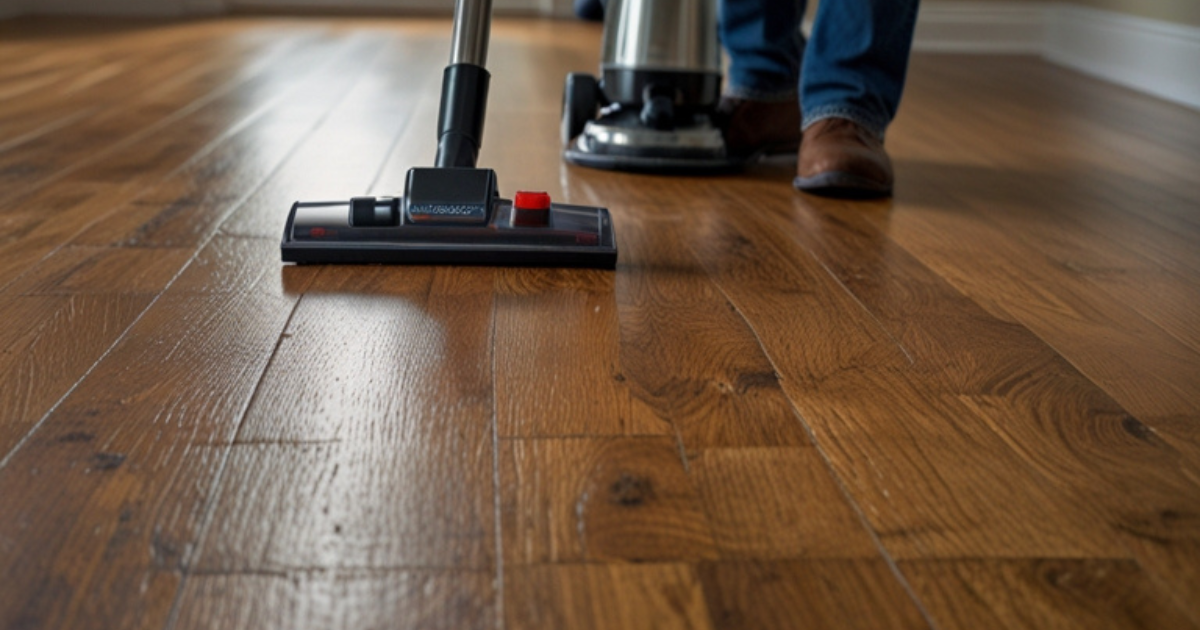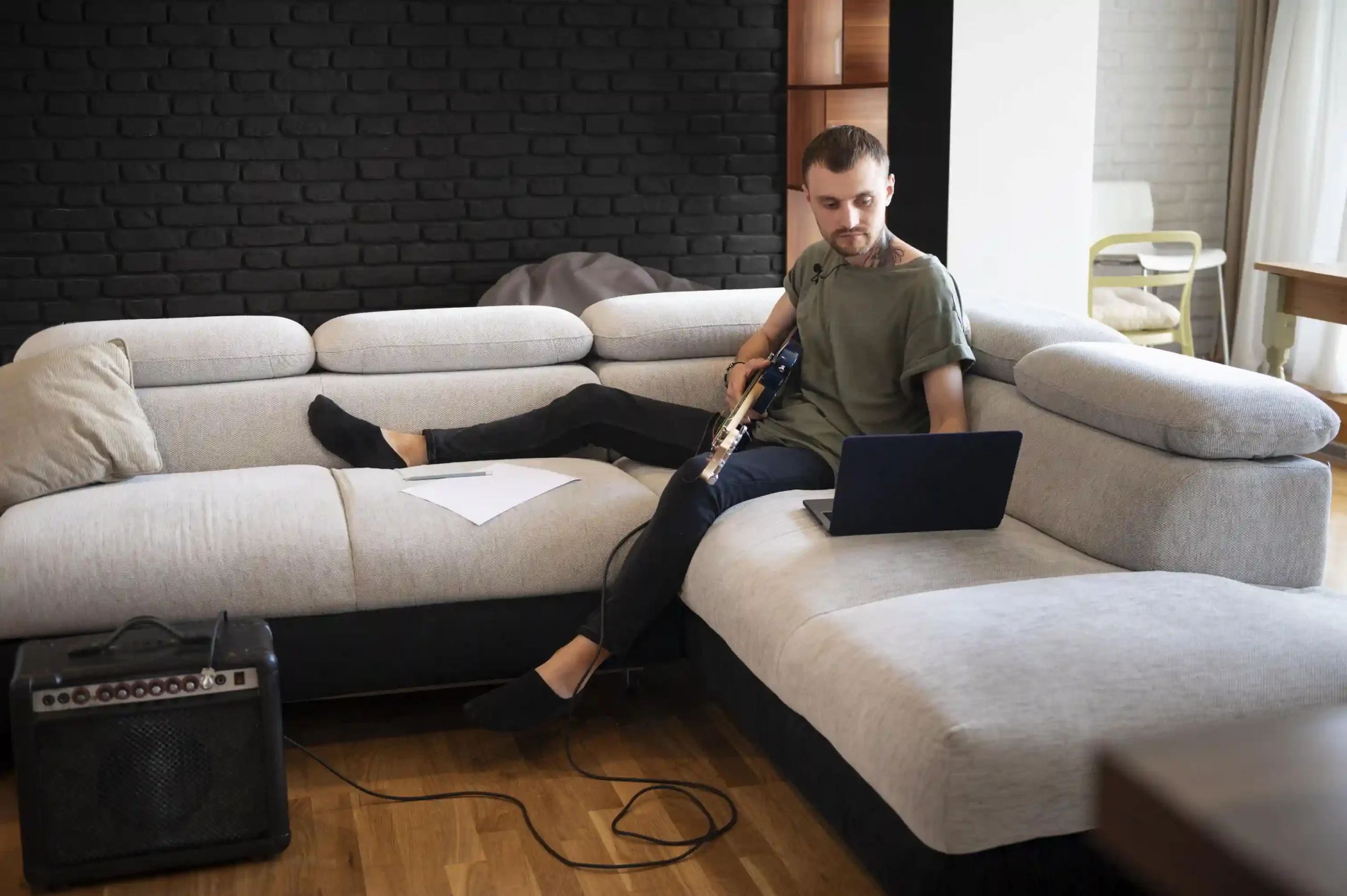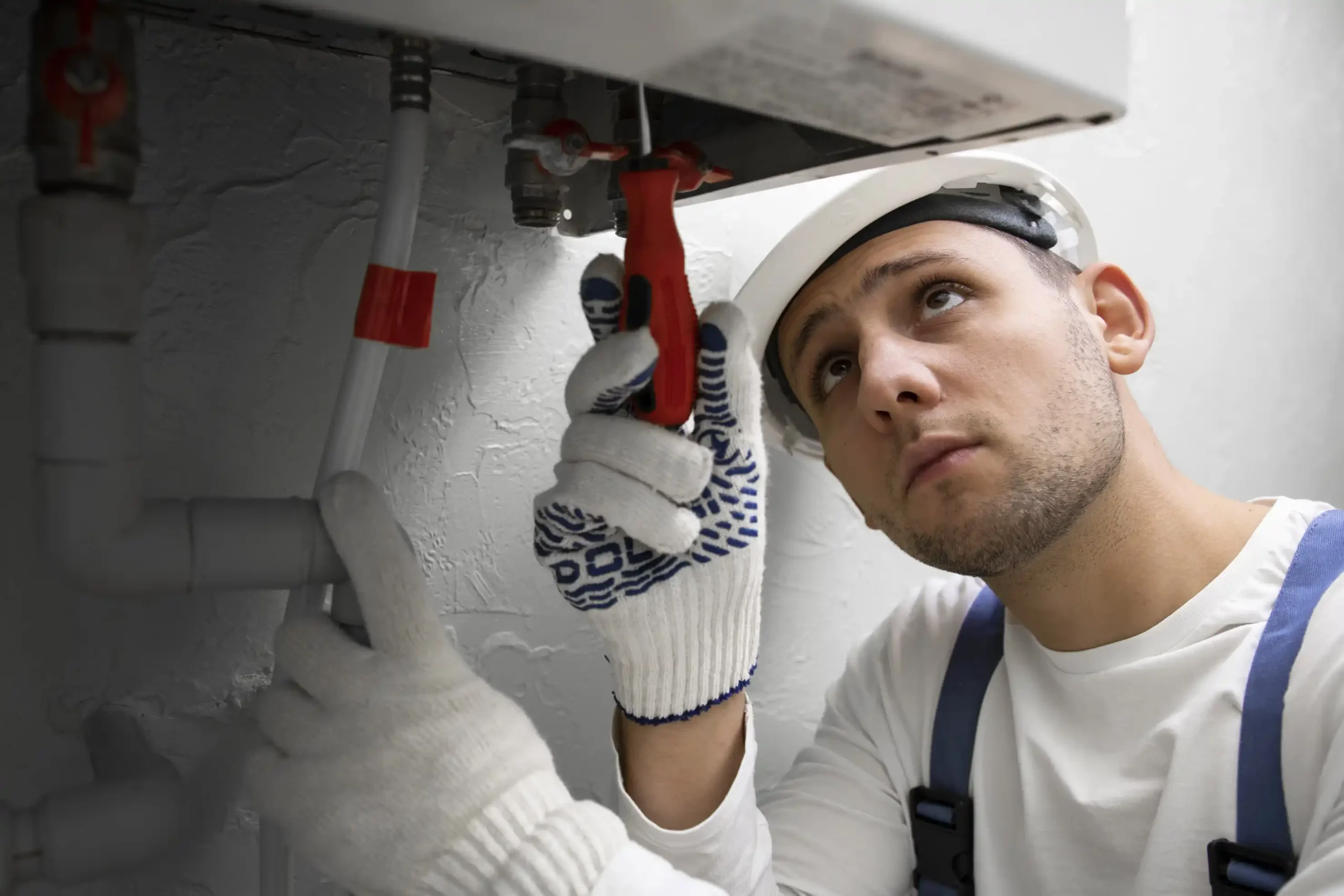Laminate flooring is a popular choice for homeowners due to its durability, affordability, and the wide variety of styles that mimic hardwood, tile, or stone. However, cleaning laminate floors requires special care to avoid damage, especially when it comes to using machines designed for other surfaces like carpets. One common question people have is whether it’s safe to use a carpet cleaner on laminate flooring.
In this blog post, we’ll explore whether a carpet cleaner can be used on laminate floors, the risks involved, and alternative cleaning methods that will help keep your laminate floors looking pristine. By understanding the unique needs of laminate flooring, you can avoid potential damage and ensure your floors remain beautiful for years to come.
Understanding Laminate Flooring

Understanding Laminate Flooring
What Is Laminate Flooring?
Laminate flooring consists of multiple layers that are fused together, with the top layer featuring a photographic image that mimics the look of real wood, stone, or tile. The top layer, also known as the wear layer, is a clear protective coating that makes the floor resistant to scratches, stains, and fading. Beneath this is the design layer, which gives the flooring its appearance, followed by a core layer made of high-density fiberboard, and a backing layer for stability and moisture resistance.
While laminate flooring is highly durable, it is not completely waterproof, which means it can be damaged if exposed to excessive moisture. This is especially important to consider when choosing cleaning methods.
How Does a Carpet Cleaner Work?
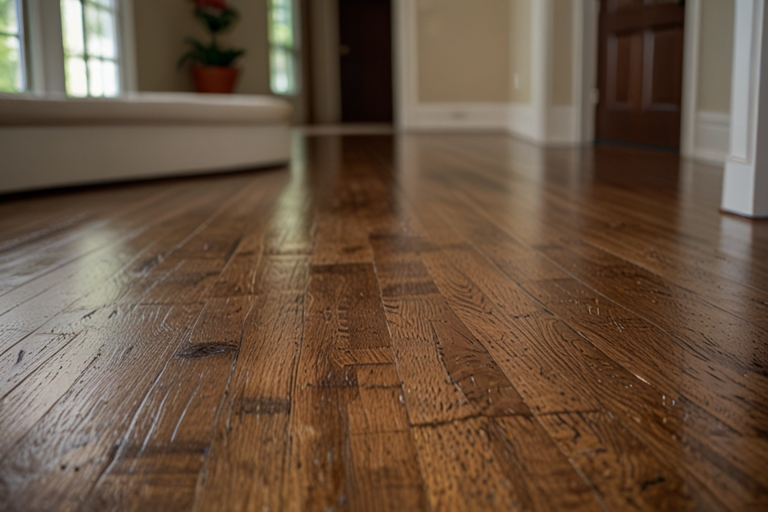
How Does a Carpet Cleaner Work?
A carpet cleaner is designed to deep clean carpets by injecting water and cleaning solution into the carpet fibers and then extracting the dirty water. This process involves a significant amount of water, which can be problematic for surfaces that aren’t designed to handle moisture, like laminate flooring. While carpet cleaners work well on fabric surfaces, using them on hard floors, especially laminate, can lead to unwanted results.
Why You Should Avoid Using a Carpet Cleaner on Laminate Flooring

Why You Should Avoid Using a Carpet Cleaner on Laminate Flooring
Excessive Water Can Damage Laminate Floors
The most significant issue with using a carpet cleaner on laminate flooring is the excessive moisture it introduces. While laminate is resistant to some moisture, prolonged exposure to water can cause severe damage. When laminate flooring absorbs too much water, it can lead to warping, swelling, and buckling of the planks.
Carpet cleaners use water to clean carpets thoroughly, and they are not designed to control the amount of water that is appropriate for hard surfaces like laminate. The high level of moisture involved can seep between the seams of the laminate planks, causing irreparable damage to the core and backing layers.
The Risk of Mold and Mildew Growth
Water that isn’t extracted properly can remain trapped underneath the laminate flooring, creating the perfect environment for mold and mildew growth. Since laminate floors are often installed with an underlayment that provides a cushioning effect, moisture trapped beneath the flooring can promote mold growth, leading to health hazards and additional flooring damage.
Cleaning Solutions May Harm the Protective Layer

Cleaning Solutions May Harm the Protective Layer
The cleaning solutions used in carpet cleaners are typically formulated for fabric and may not be suitable for laminate surfaces. These chemicals can be too harsh for the protective wear layer of laminate flooring, leading to fading, dullness, or deterioration of the surface. Over time, using the wrong cleaning solution can cause the laminate to lose its luster and may reduce its resistance to scratches and stains.
Possible Scratching from the Carpet Cleaner
Carpet cleaners are often equipped with rotating brushes and stiff bristles designed to agitate carpet fibers. These brushes can be too rough for the smooth surface of laminate flooring, leading to scratches and other surface damage. Even if the machine doesn’t leave visible scratches after one use, repeated use can degrade the finish over time.
Safe Alternatives to Cleaning Laminate Flooring
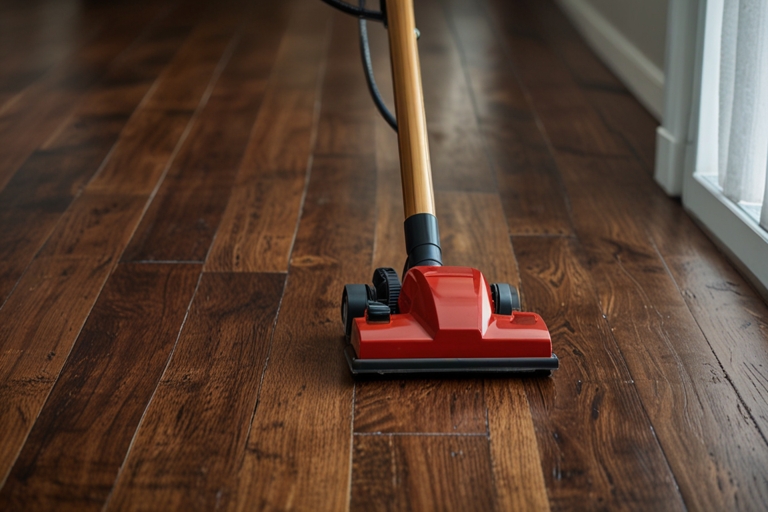
Safe Alternatives to Cleaning Laminate Flooring
Fortunately, there are several safe and effective ways to clean laminate floors without risking damage. By following these recommended cleaning methods, you can keep your floors looking fresh and clean while preserving their lifespan.
1. Dry Sweeping or Vacuuming
Sweeping or vacuuming your laminate floors regularly is one of the best ways to remove dirt, dust, and debris that can scratch the surface. Use a soft-bristle broom or a vacuum with a hard floor setting (without a beater bar) to prevent damage to the floor’s finish.
- Soft-bristle brooms: Gently sweep dirt and debris off the surface without scratching the laminate.
- Hard floor vacuum attachment: Many vacuums have a hard floor setting that turns off the rotating brush, making it safe for use on laminate floors.
Regular dry cleaning is essential to prevent dirt and debris from accumulating and causing scratches over time.
2. Microfiber Mops for Light Cleaning
For daily cleaning or light spills, a microfiber mop is an excellent choice for laminate floors. Microfiber is gentle and effective at picking up dust and dirt without the need for harsh chemicals or excessive water.
To clean with a microfiber mop:
- Use the mop dry for dusting.
- For spills or light cleaning, dampen the mop slightly with water or a laminate-safe cleaner.
- Ensure the mop is only slightly damp—never wet—to avoid introducing too much moisture.
3. Damp Mopping with a Laminate Floor Cleaner
For deeper cleaning, you can use a laminate floor cleaner specifically designed for this type of surface. These cleaners are formulated to remove grime without leaving streaks or causing damage to the floor’s protective layer.
- Damp mop: Lightly dampen your microfiber mop or cloth with a laminate-safe cleaner.
- Avoid excessive water: Make sure the mop is wrung out thoroughly, as too much moisture can still cause damage. Only use enough cleaner to lightly dampen the floor and wipe it clean.
- Wipe dry immediately: After mopping, use a dry microfiber cloth or mop to wipe away any excess moisture.
4. Steam Cleaners Designed for Hard Floors
Some steam cleaners are designed for hard floors, including laminate. However, it’s important to use these cautiously, as too much steam can still damage the laminate’s surface. Look for steam cleaners that allow you to control the amount of steam and ensure they are specifically labeled safe for laminate floors.
If you use a steam cleaner:
- Set the steam to the lowest setting.
- Move the steam cleaner quickly across the floor to avoid prolonged exposure to moisture.
- Always follow the manufacturer’s guidelines for safe use on laminate.
5. DIY Vinegar and Water Solution
For a natural cleaning solution, you can create a mixture of vinegar and water to clean laminate floors. Vinegar is mildly acidic and can cut through dirt and grime effectively while being safe for laminate when properly diluted.
Recipe:
- 1/4 cup of white vinegar
- 1 gallon of warm water
Use a damp microfiber mop with the vinegar solution to wipe the floors. Be sure to wring out the mop thoroughly and dry the floors afterward to avoid moisture damage.
Tips for Maintaining Laminate Floors
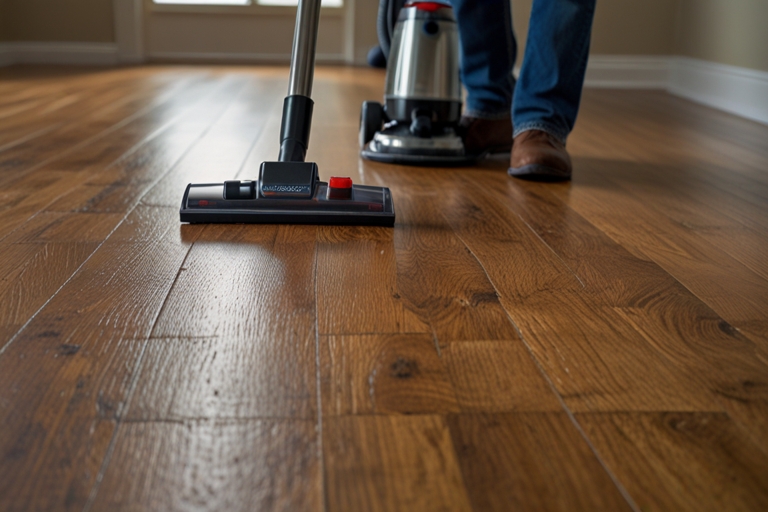
Tips for Maintaining Laminate Floors
To keep your laminate floors looking their best, follow these maintenance tips:
1. Clean Spills Immediately
Laminate floors can handle some moisture, but it’s essential to clean up spills immediately to prevent water from seeping into the seams or causing damage. Use a dry cloth or mop to absorb the spill, followed by a damp cloth to clean the area.
2. Use Rugs and Mats
Place rugs or mats in high-traffic areas and near entryways to reduce wear and tear. Rugs help trap dirt and moisture before they reach the laminate surface, preventing scratches and water damage.
3. Avoid Harsh Chemicals
Avoid using ammonia, bleach, or abrasive cleaners on laminate floors, as these can damage the finish. Stick to laminate-specific cleaners or mild, homemade solutions.
4. Protect Furniture
Use furniture pads under the legs of chairs, tables, and other heavy furniture to prevent scratches when moving them. Avoid dragging furniture across the floor, as this can cause deep scratches and damage the laminate.
Conclusion
So, can you use a carpet cleaner on laminate flooring? The answer is no. Carpet cleaners are not designed for use on laminate floors due to the excessive moisture and cleaning solutions they use, which can cause damage to the laminate’s protective layer, lead to warping, and promote mold growth. Instead, stick to safer cleaning methods like dry sweeping, using microfiber mops, and applying laminate-safe cleaners to keep your floors clean without risking damage.
By following the correct cleaning practices and maintaining your laminate floors properly, you can ensure they stay beautiful and in excellent condition for years to come.






